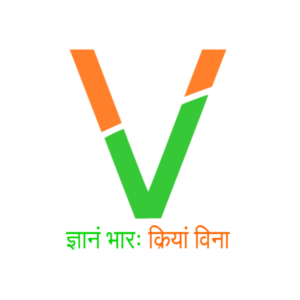The names of Dhirubhai Ambani, Dilip Sanghvi, Narayana Murthy, etc are just some exceptional cases of Rags to Riches stories which, albeit inspirational, are hardly a trend. For most people born into poor or struggling households, the escape from it is an impossible task, one that many deem irrational while giving into poverty. The term poverty and its implications are multifaceted and highly correlated leading to a complicated abyss of endless penury.
“Fundamentally, poverty is a denial of choices and opportunities, a violation of human dignity. It means a lack of basic capacity to participate effectively in society. It means not having enough to feed and clothes a family, not having a school or clinic to go to, not having the land on which to grow one’s food or a job to earn one’s living, not having access to credit. It means insecurity, powerlessness and exclusion of individuals, households, and communities. It means susceptibility to violence, and it often implies living on marginal or fragile environments, without access to clean water or sanitation.”
—United Nations, 1998
The above mentioned definition highlights the lack of access to resources as a key description of poverty. The inability to afford food, clothing ,shelter, medical facilities et cetera not only affect the given generation but in fact plays a major role in defining the life of the next generations. A family living in poverty is unable to educate their children which in turn hampers skill development and working capacity of the children. This leads to a poor work life on growing up, meaning they earn very low wages. This low wage now constitutes the income of another family which in turn will include other young children. And thus the cycle continues.
The presence of low income, which prevents proper nutritive intake ensures poor brain development in the children. This is a huge blow, not only in terms of physical capacity but the (prospective) economic status of the individual. Thus, these’ denials of choices and opportunity’ faced by one in poverty are not restricted to him or her but trickle-down generation after generation. And the cause of their own poverty, in all probability, was the poverty of their parents.
This entire system develops into a vicious cycle of its own referred to as the poverty cycle. Since poverty is the result of such accumulated factors, the eradication of it is extremely difficult, if not impossible, and is definitely a very long drawn process. A family that suffers from poverty has known only that certain depraved lifestyle and the belief that the household will embrace every bit of help given to it, in order to come out of such penurious conditions immediately is rather foolish. The monotony of the lifestyle has a psychological impact as well, and in many cases, resources provided to households to break from this cycle might be exploited.
Even if a household realizes the importance of any assistance provided to them, and does utilize it properly, a huge jump in the economic status of the household will be captured at a much later stage, perhaps one which surpasses the date of evaluating the efficiency of the given poverty alleviation method. This very fact is one of the most overlooked issues encompassing the area of implementation of poverty eradication programs.
Take the example of the mid-day meals being provided in schools catering to the so-called poor, it aims at reducing the parent’s daily meal expenditure on the children, improving incentive to send children to school, and ultimately educating the children so that in the long run they are employable. Thus the benefits of this programme, in quantifiable terms, will only be the lunch money of the children which is saved minus the income forgone while sending the children off t work, and this figure in itself is not large enough to illicit huge praise since it’s the tax-payers money being spent in such programmes. However, the children who take part in these programmes have a much higher chance of getting employed in the skilled labour market thereby ending their poverty. And this effect takes time to come around. And this amount of time must be given to any policy before evaluating the effects of the same.
From a political dimension, policies are sometimes taken up to fulfill a certain political agenda as opposed to a socio-economic one. This leads to improper time allocation before evaluating the results of a poverty allocation program, and it’s subsequent scraping off.
Although there are many poverty alleviation programs taken up during the first to fourth phases of Poverty Alleviation Programmes, which are directly aimed at improving the material wealth of the rural poor, enough emphasis has not been giving towards tackling poverty as an intra-generational issue. Looking at poverty at a particular time point via the present-day factors causing it is merely a peripheral approach to this issue. Especially in a country like India, where the family name and family traditions bear greater importance than individual ability, poverty eradication should be aimed from the point of view of imparting education to the financially worse off, so as to broaden the minds and abilities of the next generation. That is, every child should be given an opportunity to learn so that they all stand an equal chance to have a prosperous future. By giving a household tangible assets which might raise them from below the poverty line, one is only ensuring a mere temporary fix, since without proper education that attained financial status will be short-lived. And every time the family slips below the poverty line, it is not feasible to improve their condition by allocating land or any other form of wealth.
Keeping these in mind, the way of sustainable poverty eradication is in fact, education of the youth.
